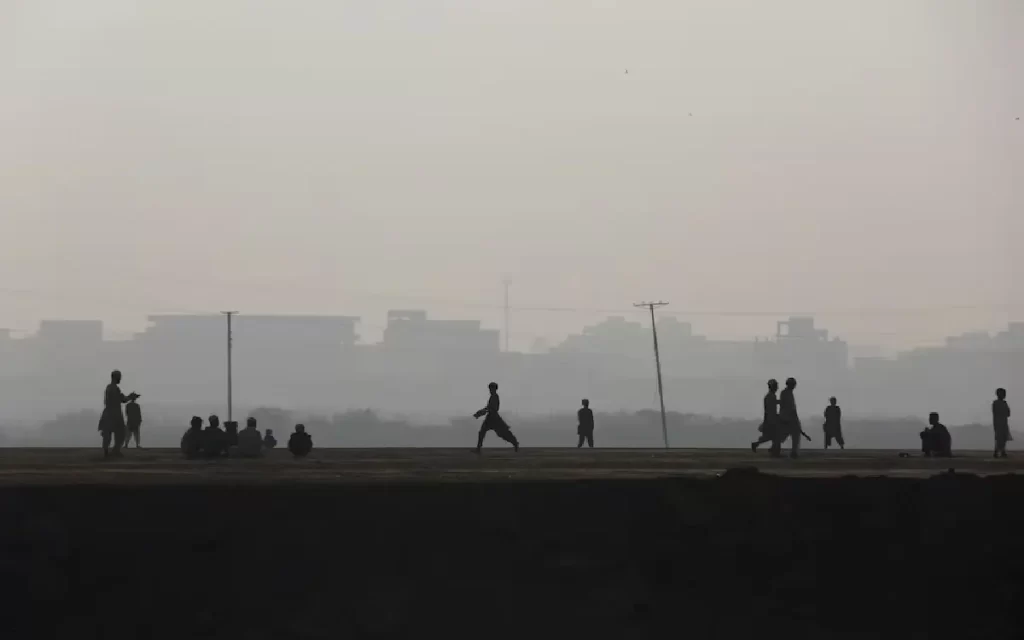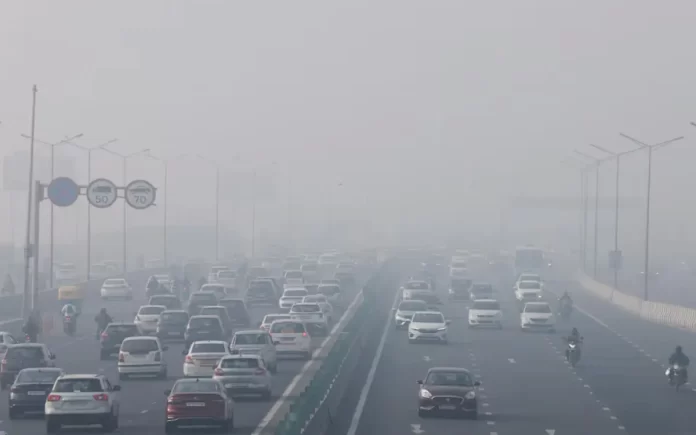New York: In 2023, Pakistan maintained its position among the world’s top three smoggiest countries, while Bangladesh and India emerged as new contenders, replacing Chad and Iran. Shockingly, the levels of particulate matter in these countries exceeded the World Health Organization’s recommendations by about 15 times, according to data released on Tuesday.
The average concentrations of PM2.5, which are tiny airborne particles notorious for damaging the lungs, soared to 79.9 micrograms per cubic meter in Bangladesh and 73.7 micrograms in Pakistan. To put this into perspective, the WHO advises no more than 5 micrograms for optimal health.
Christi Chester Schroeder, the air quality science manager at IQAir, a renowned Swiss air-monitoring organization, shed light on the grim situation, stating, “Because of the climate conditions and the geography (in South Asia), you get this streak of PM2.5 concentrations that just skyrocket because the pollution has nowhere to go.” She added, “On top of that are factors such as agricultural practices, industry, and population density. Unfortunately, it really does look like it will get worse before it gets better.”
Read More: South Korea Sees Uptick in Marriages in 2023 After 11-Year Decline

Read More: SpaceX’s Starshield: Crafting a Revolutionary Spy Satellite Network for U.S. Intelligence
Air Quality Alert: Where Do Bangladesh and India Stand?
Interestingly, Bangladesh had been ranked fifth in terms of air quality in 2022, while India stood at eighth. However, the situation deteriorated significantly the following year.
According to Md Firoz Khan, an air pollution expert at Dhaka’s North South University, about 20% of premature deaths in Bangladesh can be attributed to air pollution, with related healthcare costs amounting to 4%-5% of the country’s GDP.
India’s pollution levels also witnessed a distressing surge, with PM2.5 levels approximately 11 times higher than the WHO standard. New Delhi, India’s capital, emerged as the worst-performing city with a PM2.5 concentration of 92.7 micrograms.
Even China, known for its stringent environmental policies, experienced a 6.3% rise in PM2.5 levels, reaching 32.5 micrograms last year, marking a deviation from five consecutive annual declines.
In a stark contrast, only a handful of countries, including Australia, Estonia, Finland, Grenada, Iceland, Mauritius, and New Zealand, managed to meet WHO standards in 2023.
The IQAir report, which served as the basis for these findings, compiled data from over 30,000 monitoring stations across 134 countries and regions. Notably, Chad, previously recognized as the world’s most polluted country in 2022, was excluded from the 2023 listings due to data discrepancies. Iran and Sudan were also absent from the 2023 list.



